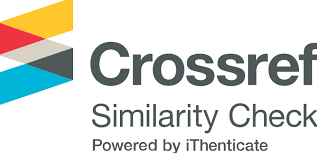Heartrot of Acacia mangium: Genetic variations in the second generartion progeny tests at age of 8-9 years
Keywords:
Acacia mangium, 2nd generation test, ArborSonic 3D, heartrot, wood properties,, heritability, GxE interactionAbstract
Study on genetic variation in heartrot percentage and disease index was carried out by using ArborSonic 3D machine in 3 second generation progeny tests in Ba Vi - Ha Noi, Quy Hop - Nghe An and Bau Bang - Binh Duong, at age of 8 -9 years; The correlation of heartrot percentages evaluated between ArborSonic 3D equipment and Caroline method (2006) were close (r = 0,77) respectively. In consequence, ArborSonic 3D can be used to quickly identify heartrot disease with high confidence. Predicting the genetic parameters for the 3 progeny tests indicated narrow-sense heritabilities of heartrot percentage and heartrot index were low, ranging from 0.14 to 0.23, but coefficients of additive
genetic variation (CV a) of them were high, from 10.8 to 24.5%. The substantial coefficients of additive genetic variation and significant heritabilities for heartrot percentage and heartrot index indicate that considerable potential for improvement in heartrot percentage and heartrot index through selecting among superior individuals within families of A. mangium. Genetic correlation (Rg) between heartrot index and density, and shrinkage ratios in both tangential and radial directions were negative and significantly different from zero (ranged from -0.47 to -0.75). Heartrot index also correlated positively and weakly with dynamic modulus of elasticity (Rg=0.21-0.37). In contrast, heartrot index positively and strongly correlated with wood strength (Rg=0.51-0.64). The site-site genetic correlations between Ba Vi, Quy Hop and Bau Bang were low for growth traits and heartrot index indicating that G x E effects are of practical importance for growth and heartrot index and different deployment populations will be required for different sites.
References
1. Barry, K. M., Irianto, R. S. B., Santoso, E., Turjaman, M., Widyati, E., Sitepu, I. & Mohammed, C. L. (2004). Incidence of heartrot in harvest-age Acacia mangium in Indonesia, using a rapid survey method. Forest Ecology and
Management, 190, 273-280.
2. Basak, A.C (1997) Heart rot of Acacia mangium in Bangladesh. Indian Journal of Forestry, 20, 61 -66.
3. Caroline L. Potter, K, Rimbawanto, A and Beadle (2006). Heart rot and root rot in Acacia mangium: identification and assessment. Proceedings of a workshop held in Yogyakarta, Indones ia, 7-9 February 2006, ACIAR Proceedings No. 124.
4. Cornelius, J., 1994. Heritabilities and additive genetic coefficients of variation in forest trees. Can. J. For. Res.24, 372-378.
5. Đoàn Ngọc Dao, 2012. Nghiên cứu biến dị và khả năng di truyền một số đặc điểm sinh trưởng và tính chất gỗcủa Keo tai tượng làm cơ sở cho chọn giống. Viện Khoa học Lâm nghiệp Việt Nam, 152 trang.
6. Falconer, D.S., Mackay, T.F.C., 1996. Introduction to Quantitative Genetics. Pearson Education Limited, Harlow, England.
7. Gilmour, A.R., Gogel, B.J., Cullis, B.R., Welham, S.J. and Thompson, R., 2006. ASReml User Guide Release 2,0. Hemel Hempstead, UK: VSN International Ltd, 287 p.
8. Kyaw Ko Win, Jung-Kwon Oh, Chul-Ki Kim, Jung-Pyo Hong, and Jun-Jae Lee, 2015. Development of stress wave indices for heart-rot detection in teak tree. Wood Science and Technology, Volume 49, Issue 5, pp 1021-1035.
9. Ladislav Reinprecht and Jaroslav Hrivnák, 2012. Ultrasonic and drill resistance defectoscopy of Coniferous and broadleaved logs. ACTA FACULTATIS XYLOLOGIAE ZVOLEN, 54(1): 43-54, 2012.
10. Phí Hồng Hải, Gunnar Jasson, Bjorn Hannrup, Chris Harwood, and Ha Huy Thinh, 2009. Use of wood shrinkage characteristics in breeding of fast-grown Acacia auriculiform A. Cunn. ex Benth in Vietnam. Annals of Forest
Science, 66(6), 611p1 - 611p9.
11. Phí Hồng Hải (2015), Nghiên cứu chọn và nhân giống Keo tai tượng và Keo lá liềm phục vụ trồng rừng kinh tế,Báo cáo tổng kết đề tài, Viện Khoa học Lâm nghiệp Việt Nam, 125 tr.
12. Qibin Yu, Dian-Qing Yang, S.Y. Zhang, Jean Beaulieu, and Isabelle Ducesrne. (2003): Genetic variation indecay resistance and its correlatinon wood density and growth in white spruce. Canadian Journal of Forest Research; ottawa Vol. 33, Iss. 11; 2177-2183.
13. Swedjemark, G., Karlsson, B., Stenlid J., 2007: Exclusion of Heterobasidion praviporum from inoculated clones of Picea abies and evidence of systemic induced resistance. Candinavian Journal of Forest Research, Volume 22, pp. 110-117(8).
14. Zakaria, I., Wan Razali, W.M., Hashim, M.N., Lee, S.S., (1994). The incidence of heartrot in Acacia mangium plantational in Peninsula Malaysia. FRIM Research Pamphlet, 114, p. 15.
15. TCVN: 8928-2012. Phòng trừ bệnh hại cây rừng - Hướng dẫn chung.








